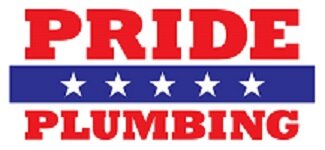Dealing With Leaking Pipes
Causes, Prevention and Solutions
Introduction
Leaking pipes can quickly turn from a minor inconvenience into a major plumbing disaster if not addressed promptly. Whether a slow drip or a sudden gush, a leaking pipe demands immediate attention to prevent water damage, mold growth, and costly repairs. This post will explore the common causes of leaking pipes, discuss preventive measures, and provide actionable solutions to help you tackle this issue effectively.
Common Causes of Leaking Pipes
Corrosion: Over time, pipes can corrode due to the chemical reactions between the metal and water. Corrosion weakens the pipe's structure, leading to cracks and leaks. If your plumbing system uses older galvanized steel or iron pipes, they are more susceptible to corrosion.
High Water Pressure: Excessively high water pressure can strain your pipes, causing them to develop leaks. It's essential to ensure your home's water pressure is within a safe range, usually between 40 to 80 psi (pounds per square inch).
Temperature Changes: Extreme temperature fluctuations can cause pipes to expand and contract, leading to cracks and leaks. This is especially common in areas with harsh winters, where frozen pipes can burst when water freezes and expands.
Clogs: Accumulation of debris, grease, hair, and mineral deposits can lead to clogs in the pipes. Clogs disrupt water flow and increase pressure within the pipes, potentially causing leaks.
Pipe Joints and Fittings: Poorly sealed or corroded pipe joints and fittings are common areas for leaks to develop. These connections are vulnerable to wear and tear over time, allowing water to escape.
Preventive Measures to Avoid Leaking Pipes
Regular Inspections: Periodically inspect your plumbing system for signs of leaks, such as water stains, dampness, or mold growth. Early detection can help you address issues before they escalate.
Maintain Moderate Water Pressure: Install a pressure regulator to maintain optimal water pressure in your pipes. This prevents unnecessary strain on the pipes and reduces the risk of leaks.
Insulate Exposed Pipes: In regions with cold winters, insulate exposed pipes to protect them from freezing temperatures. This insulation can prevent cracks and leaks caused by pipe expansion due to freezing water.
Proper Waste Disposal: Avoid disposing of items that could clog your pipes down the drain or toilet. This includes grease, cooking oil, paper towels, and hygiene products. Use drain strainers to catch debris and prevent it from entering your plumbing system.
Professional Maintenance: Schedule regular plumbing maintenance with a professional. A skilled plumber can identify potential issues, clean clogs, and replace worn-out components before leaks occur.
Steps to Address Leaking Pipes
Shut Off the Water: If you discover a leaking pipe, immediately turn off the main water supply to prevent further damage.
Contain the Leak: Place a bucket or container under the leak to catch dripping water and minimize water damage.
Temporary Repairs: For minor leaks, you can use plumber's tape or a pipe clamp as a temporary fix until a professional plumber arrives.
Call a Professional: Leaking pipes require professional attention. A licensed plumber has the expertise and tools to assess the extent of the damage, repair or replace the affected pipes, and ensure a lasting solution.
Conclusion
Leaking pipes are a plumbing issue that demands swift action. By understanding the causes of leaks, practicing preventive measures, and knowing what steps to take when you encounter a leaking pipe, you can minimize water damage, prevent costly repairs, and maintain a healthy and functional plumbing system. Remember, Pride Plumbing of Rochester is here to assist you with any plumbing concerns. Our team of experts is ready to provide timely and practical solutions to keep your home's plumbing in optimal condition.


